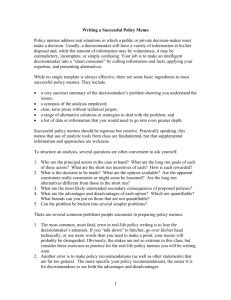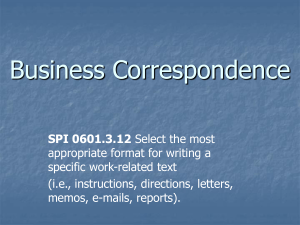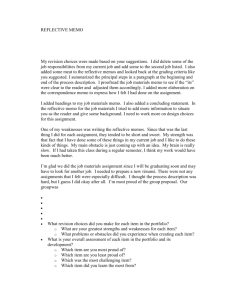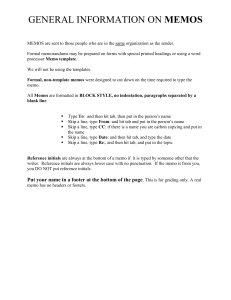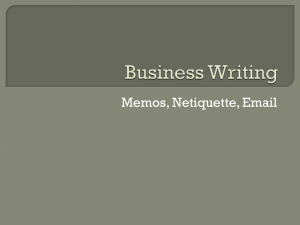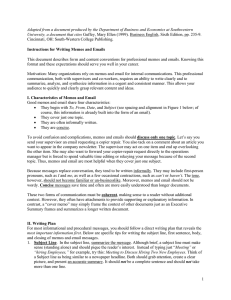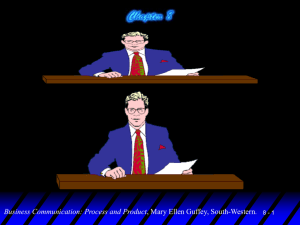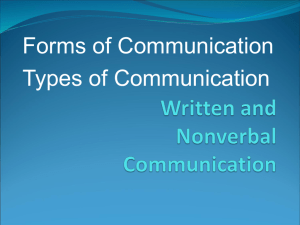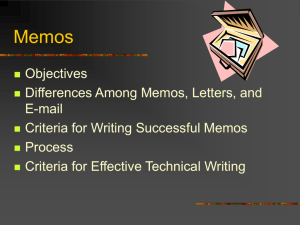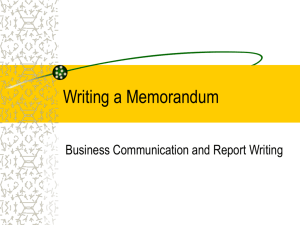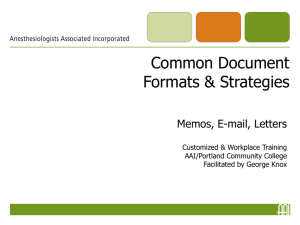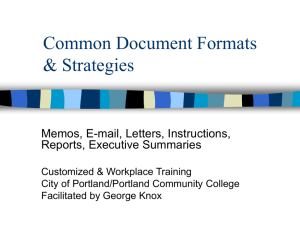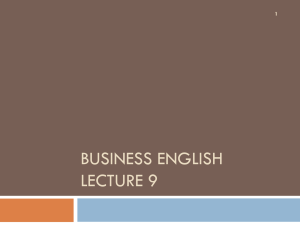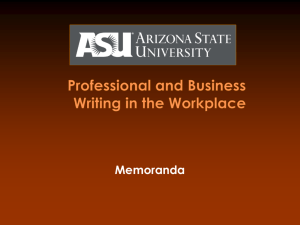Writing the Business Memo
advertisement
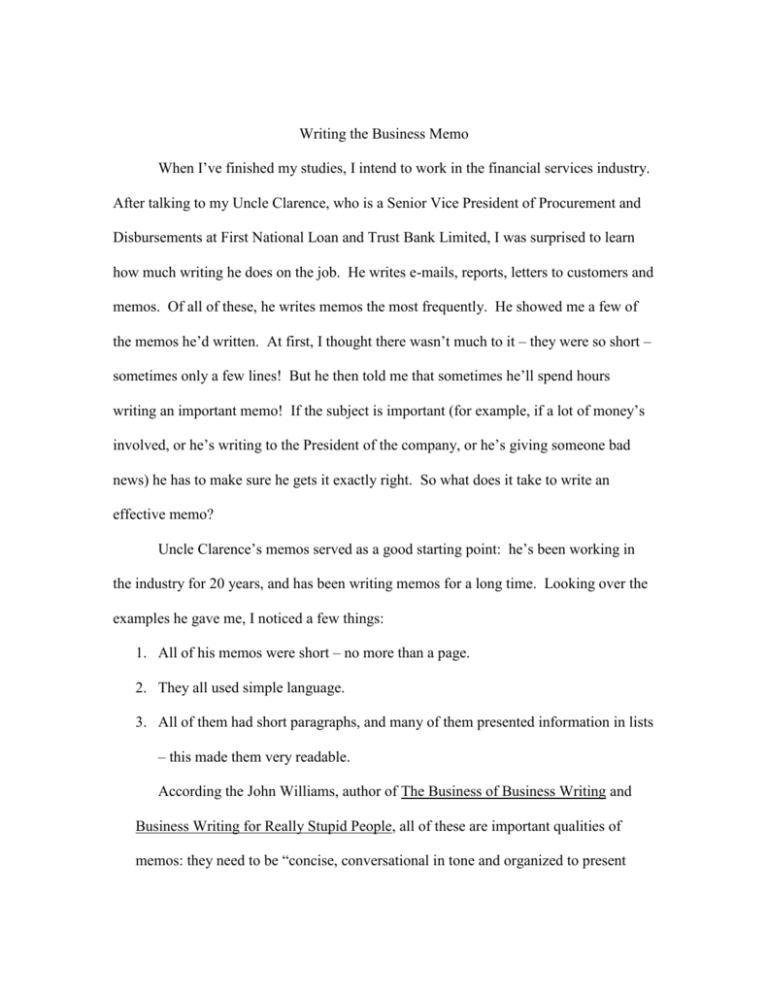
Writing the Business Memo When I’ve finished my studies, I intend to work in the financial services industry. After talking to my Uncle Clarence, who is a Senior Vice President of Procurement and Disbursements at First National Loan and Trust Bank Limited, I was surprised to learn how much writing he does on the job. He writes e-mails, reports, letters to customers and memos. Of all of these, he writes memos the most frequently. He showed me a few of the memos he’d written. At first, I thought there wasn’t much to it – they were so short – sometimes only a few lines! But he then told me that sometimes he’ll spend hours writing an important memo! If the subject is important (for example, if a lot of money’s involved, or he’s writing to the President of the company, or he’s giving someone bad news) he has to make sure he gets it exactly right. So what does it take to write an effective memo? Uncle Clarence’s memos served as a good starting point: he’s been working in the industry for 20 years, and has been writing memos for a long time. Looking over the examples he gave me, I noticed a few things: 1. All of his memos were short – no more than a page. 2. They all used simple language. 3. All of them had short paragraphs, and many of them presented information in lists – this made them very readable. According the John Williams, author of The Business of Business Writing and Business Writing for Really Stupid People, all of these are important qualities of memos: they need to be “concise, conversational in tone and organized to present their message as clearly as possible” (Really Stupid 56). Williamsburg University’s Internet Writing Lab listed these same criteria, adding that a someone reading your memo should “be able to understand your message after a single reading.” The Lab went on to describe the exact format of memos: • Top, bottom and margins should be 1-2 inches, the right margin 1/2 - 1 1/2 inches. • Paragraphs are single-spaced, with an extra space between paragraphs. • The first line of each paragraph should not be indented. Finally, Guerrilla Writing on the Electronic Frontier, by Mary Clapton, suggests that memos need to be organized with their audience’s possible reactions in mind. When giving bad news, for example, “the memo needs to emphasize the positive by easing readers into the bad news” (678-9). In order to put all of these qualities into practice, I’ve decided to write a memo in response to a very complicated situation. For my assignment, I’ll first describe the writing situation to which I’m responding, and then will write a memo that meets all of the above criteria. Writing Situation for Business Memo I’m heading up a project team for an American company selling detergents overseas. Lately, there have been problems with counterfeit versions of our products being sold in small stores in other countries. My team has to solve this problem. We’re working against a tight deadline, the project has already faced a number of delays, and a great deal of work still needs to be done. Over the past month team members have been busy with other projects, and many have skipped afternoon and morning meetings, complaining of scheduling conflicts. In order to complete work on the project, we’ll have to start meeting after-hours. Unfortunately, due to work being done on the computer network, we can’t meet at work. Not only must the team meet after hours, but also they must meet off-premises, at a conference room of a hotel. My memo will have to inform the team of these changes. But I need them to stay motivated, so that they don’t come to these meetings with an attitude that will prevent our getting any work done. So my memo will also have to put a positive spin on things. To: All, Counterfeit Brands Project Team From: Dweezle Zappa, Team Leader Subject: Strategy for Completing Project On-time We’ve made great progress in the past few months in devising strategies for addressing the problem of counterfeit brands. I am confident that the strategies we’re developing will help the company regain much of the market share lost to these brands. As you know, the project deadline is less than a month away. While we’ve accomplished a great deal, there is a lot of work yet to be done. I realize that many team members are involved with other projects, and this has made it difficult for many people to attend meetings. As a result, over the last few weeks our progress has slowed. As things stand, we will probably miss our deadline, which means our scheduling problems will continue, and the company will keep losing money to counterfeits. In order to finish the project on-schedule, we’ll need to arrange for meetings at a time when everyone can attend. Fortunately, Unilever has made funds available to rent a conference room at the Plaza Hotel. By holding our remaining meetings over dinner, we should have no problem meeting the project deadline. I’d recommend: Monday 7:00 – 9:00 Wednesday 7:00 - 9:00 Thursday 5:00 – 8:00 At our next meeting we can decide if these nights work for everyone, keeping in mind that we’ll need to meet at least three times a week. More important, we can vote on the menu! Please feel free to contact me at any time with any questions or concerns.




